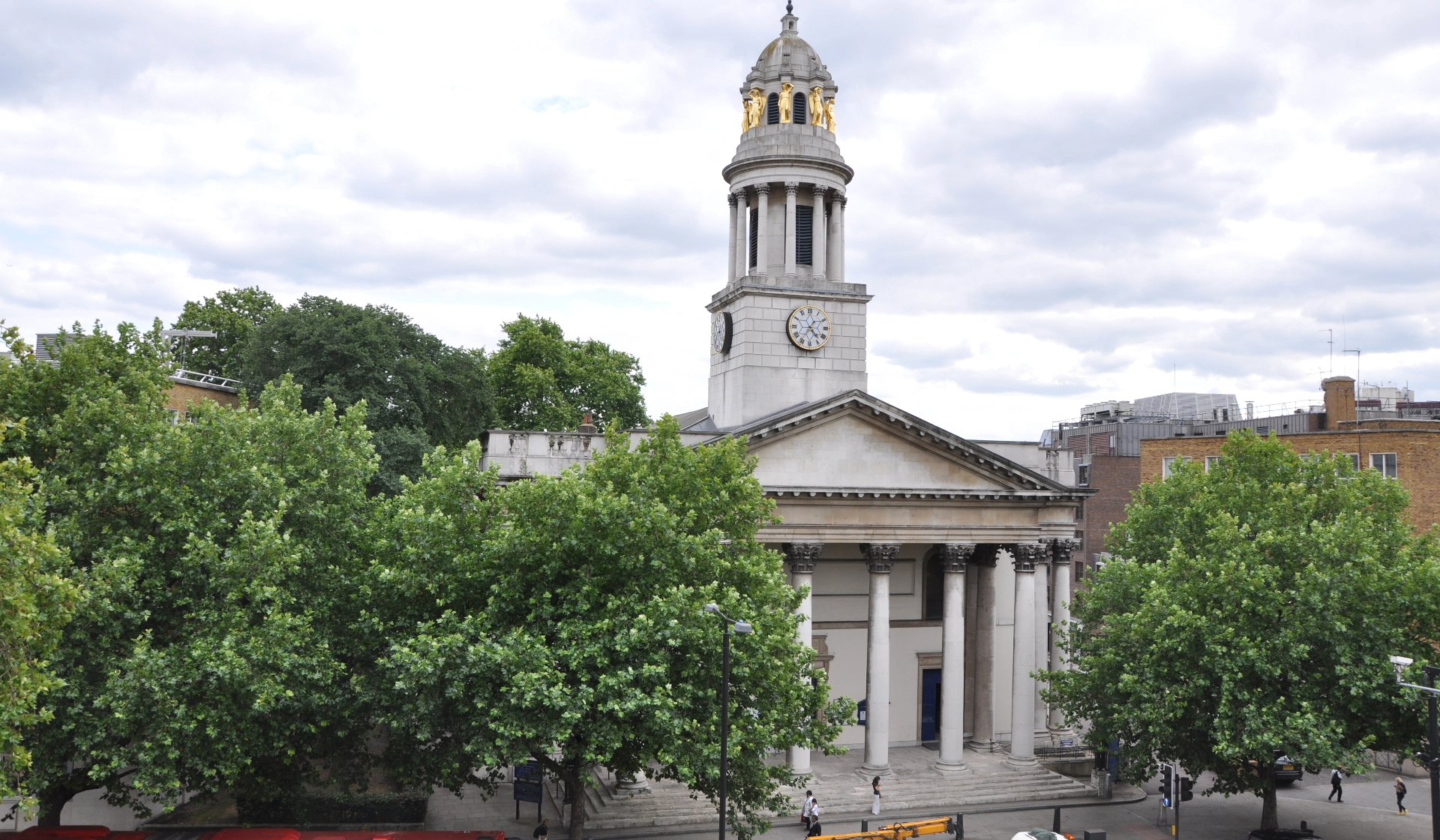Architectural Details
The Bells

St Marylebone has just three bells used to strike the quarter hours. The bells were installed in the belfry in 1817 in readiness for the new parish church’s consecration in February 1817. The largest bell weighs 3 cwt.
American author Bayard Taylor’s ‘Views a-foot’ or ‘Europe seen with knapsack and staff’, written during his travels in the mid-1840s, misidentifies the bells of St Mary le Bow (or possibly St Mary le Strand) with those of St Marylebone:
“I have listened, on my way homeward, to the chimes of Mary-le-bone Chapel, sounding sweetly and clearly above all the din of the Strand. There is something in their silvery vibration, which is far more expressive than the ordinary tones of a bell. The ear becomes weary of a continued toll—the sound of some bells seems to have nothing more in it than the ordinary clang of metal— but these simple notes, following one another so melodiously, fall on the ear, stunned by the ceaseless roar of carriages or the mingled cries of the mob, as gently and gratefully as drops of dew…
…Whether it be morning, and they ring out louder and deeper through the mist, or midnight, when the vast ocean of being beneath them surges less noisily than its wont, they are alike full of melody and poetry. I have often paused, deep in the night, to hear those clear tones, dropping down from the darkness, thrilling, with their full, tremulous sweetness, the still air of the lighted Strand, and winding away through dark, silent lanes and solitary courts, till the ear of the care-worn watcher is scarcely stirred with their dying vibrations. They seemed like those spirit-voices, which, at such times, speak almost audibly to the heart. How delicious it must be, to those who dwell within the limits of their sound, to wake from some happy dream and hear those chimes blending in with their midnight fancies, like the musical echo of the promised bliss. I love these eloquent bells, and I think there must be many, living out a life of misery and suffering, to whom their tones come with an almost human consolation.”
